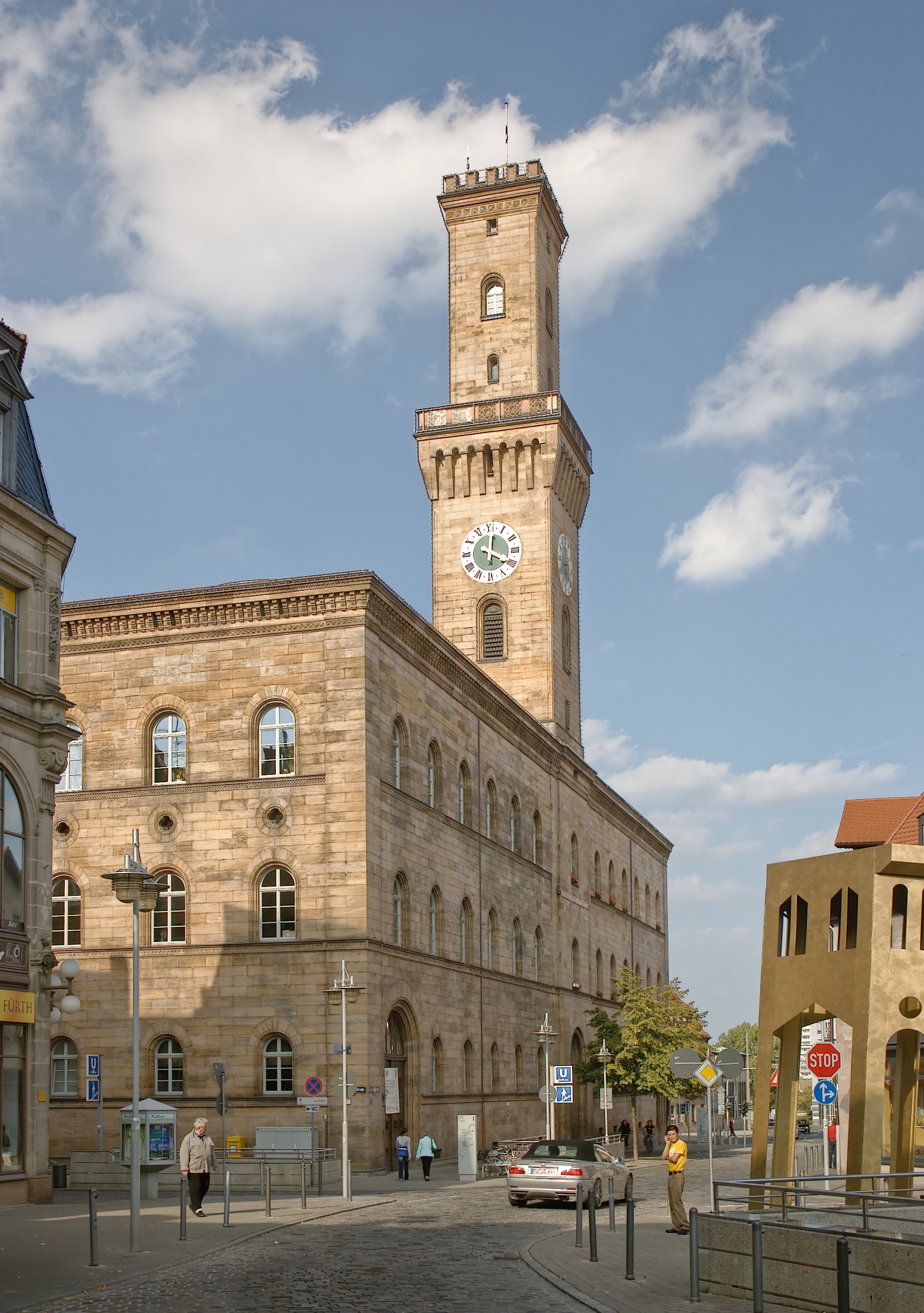|
Ludwig Siebert
Ludwig Siebert (17 October 1874 – 1 November 1942) was a German lawyer and Nazi Party politician who served as the Minister President of Bavaria in Nazi Germany from 1933 to 1942. Early life Siebert was born in Ludwigshafen in the Palatinate, the son of a locomotive engineer. He attended the gymnasium in Mannheim and studied law at the Ludwig Maximilian University of Munich from 1893 to 1897. After passing his legal examination in 1900 he worked in the civil service as a lawyer in Frankenthal (Pfalz) and became the public prosecutor in Bad Dürkheim and Neustadt an der Haardt (today, Neustadt an der Weinstraße). From 1905 to 1906 he worked as the public prosecutor of Fürth in Middle Franconia. In 1907 he became a magistrate in Lindau on Lake Constance. A member of the Bavarian People's Party (BVP), he joined the City Council of the city of Rothenburg ob der Tauber and was the ''Bürgermeister'' (Mayor) there from 1908 to 1919. Siebert was elected ''Bürgermeister' ... [...More Info...] [...Related Items...] OR: [Wikipedia] [Google] [Baidu] |
Lawyer
A lawyer is a person who practices law. The role of a lawyer varies greatly across different legal jurisdictions. A lawyer can be classified as an advocate, attorney, barrister, canon lawyer, civil law notary, counsel, counselor, solicitor, legal executive, or public servant — with each role having different functions and privileges. Working as a lawyer generally involves the practical application of abstract legal theories and knowledge to solve specific problems. Some lawyers also work primarily in advancing the interests of the law and legal profession. Terminology Different legal jurisdictions have different requirements in the determination of who is recognized as being a lawyer. As a result, the meaning of the term "lawyer" may vary from place to place. Some jurisdictions have two types of lawyers, barrister and solicitors, while others fuse the two. A barrister (also known as an advocate or counselor in some jurisdictions) is a lawyer who typically specializ ... [...More Info...] [...Related Items...] OR: [Wikipedia] [Google] [Baidu] |
Middle Franconia
Middle Franconia (german: Mittelfranken, ) is one of the three administrative regions of Franconia in Bavaria, Germany. It is located in the west of Bavaria and borders the state of Baden-Württemberg. The administrative seat is Ansbach; however, the most populous city is Nuremberg. Subdivisions The region is divided into seven districts ('Landkreise') and five independent cities ('Kreisfreie Städte'). Independent cities * Ansbach * Erlangen * Fürth * Nuremberg * Schwabach Districts * Ansbach * Erlangen-Höchstadt * Fürth * Neustadt (Aisch)-Bad Windsheim * Nürnberger Land * Roth * Weißenburg-Gunzenhausen History After the founding of the Kingdom of Bavaria the state was totally reorganised and, in 1808, divided into 15 administrative government regions (German: Regierungsbezirke (singular Regierungsbezirk)), in Bavaria called Kreise (singular: Kreis). They were created in the fashion of the French departements, quite even in size and population, and named after th ... [...More Info...] [...Related Items...] OR: [Wikipedia] [Google] [Baidu] |
Fürth
Fürth (; East Franconian: ; yi, פיורדא, Fiurda) is a city in northern Bavaria, Germany, in the administrative division ('' Regierungsbezirk'') of Middle Franconia. It is now contiguous with the larger city of Nuremberg, the centres of the two cities being only apart. Fürth is one of 23 "major centres" in Bavaria. Fürth, Nuremberg, Erlangen and some smaller towns form the "Middle Franconian Conurbation", which is one of the 11 German metropolitan regions. Fürth celebrated its thousand year anniversary in 2007, its first mention being on 1 November 1007. Geography The historic centre of the town is to the east and south of the rivers Rednitz and Pegnitz, which join to form the Regnitz to the northwest of the Old Town. To the west of the town, on the far side of the Main-Danube Canal, is the Fürth municipal forest (''Fürther Stadtwald''). To the east of Fürth, at roughly the same latitude, lies Nuremberg, and to the north is the fertile market-gardening area ... [...More Info...] [...Related Items...] OR: [Wikipedia] [Google] [Baidu] |
Neustadt An Der Weinstraße
Neustadt an der Weinstraße (, formerly known as ; lb, Neustadt op der Wäistrooss ; pfl, Naischdadt) is a town in Rhineland-Palatinate, Germany. With 53,300 inhabitants , it is the largest town called ''Neustadt''. Geography Location The town itself lies in the western park of the Rhine-Neckar Metropolitan Region between the Haardt mountains, the eastern edge of the Palatinate Forest, and the western edge of the Upper Rhine Plain in the middle of the Palatinate wine region, an area that is around 10 km wide and 85 km long. The Speyerbach river flows through the town from west to east as does the Rehbach, which separates from the Speyerbach within the town at the ''Winzinger Wassergescheid'' before emptying into the River Rhine several kilometres further north than the Speyerbach. The borough, with its incorporated parishes, measures from west to east and from north to south. Its highest point is at the Hohe Loog House at the top of the Hohe Loog moun ... [...More Info...] [...Related Items...] OR: [Wikipedia] [Google] [Baidu] |
Bad Dürkheim
Bad Dürkheim () is a spa town in the Rhine-Neckar urban agglomeration, and is the seat of the Bad Dürkheim district in Rhineland-Palatinate, Germany. Geography Location Bad Dürkheim lies at the edge of Palatinate Forest on the German Wine Route some 30 km east of Kaiserslautern and just under 20 km west of Ludwigshafen and Mannheim. Roughly 15 km to the south lies Neustadt an der Weinstraße. In Bad Dürkheim, ''Bundesstraßen'' 37 and 271 cross each other. From west to east through the town flows the river Isenach. Constituent communities Bad Dürkheim's ''Ortsteile'' are Grethen, Hardenburg, Hausen, Leistadt, Seebach and Ungstein including Pfeffingen. Climate Yearly precipitation in Bad Dürkheim is 574 mm, which is low, falling into the lowest quarter of the precipitation chart for all Germany. Lower figures recorded at only 16% of the German Weather Service's weather stations. The driest month is February. The most rainfall comes in May. In ... [...More Info...] [...Related Items...] OR: [Wikipedia] [Google] [Baidu] |
Public Prosecutor
A prosecutor is a legal representative of the prosecution in states with either the common law adversarial system or the civil law inquisitorial system. The prosecution is the legal party responsible for presenting the case in a criminal trial against an individual accused of breaking the law. Typically, the prosecutor represents the state or the government in the case brought against the accused person. Prosecutor as a legal professional Prosecutors are typically lawyers who possess a law degree, and are recognised as suitable legal professionals by the court in which they are acting. This may mean they have been admitted to the bar, or obtained a comparable qualification where available - such as solicitor advocates in England and Wales. They become involved in a criminal case once a suspect has been identified and charges need to be filed. They are employed by an office of the government, with safeguards in place to ensure such an office can successfully pursue the pro ... [...More Info...] [...Related Items...] OR: [Wikipedia] [Google] [Baidu] |
Frankenthal (Pfalz)
Frankenthal (Pfalz) ( pfl, Frongedahl) is a town in southwestern Germany, in the state of Rhineland-Palatinate. History Frankenthal was first mentioned in 772. In 1119 an Augustinian monastery was built here, the ruins of which — known, after the founder, as the ''Erkenbertruine'' — still stand today in the town centre. In the second half of the 16th century, people from Flanders, persecuted for their religious beliefs, settled in Frankenthal. They were industrious and artistic and brought economic prosperity to the town. Some of them were important carpet weavers, jewellers and artists whose ''Frankenthaler Malerschule'' ("Frankenthal school of painting") acquired some fame. In 1577 the settlement was raised to the status of a town by the Count Palatine Johann Casimir. In 1600 Frankenthal was converted to a fortress. In 1621 it was besieged by the Spanish during the Thirty Years' War, and then successively occupied by troops of the opposing sides. Trade and industry w ... [...More Info...] [...Related Items...] OR: [Wikipedia] [Google] [Baidu] |
Civil Service
The civil service is a collective term for a sector of government composed mainly of career civil servants hired on professional merit rather than appointed or elected, whose institutional tenure typically survives transitions of political leadership. A civil servant, also known as a public servant, is a person employed in the public sector by a government department or agency for public sector undertakings. Civil servants work for central and state governments, and answer to the government, not a political party. The extent of civil servants of a state as part of the "civil service" varies from country to country. In the United Kingdom (UK), for instance, only Crown (national government) employees are referred to as "civil servants" whereas employees of local authorities (counties, cities and similar administrations) are generally referred to as "local government civil service officers", who are considered public servants but not civil servants. Thus, in the UK, a civil servant ... [...More Info...] [...Related Items...] OR: [Wikipedia] [Google] [Baidu] |
Mannheim
Mannheim (; Palatine German: or ), officially the University City of Mannheim (german: Universitätsstadt Mannheim), is the second-largest city in the German state of Baden-Württemberg after the state capital of Stuttgart, and Germany's 21st-largest city, with a 2020 population of 309,119 inhabitants. The city is the cultural and economic centre of the Rhine-Neckar Metropolitan Region, Germany's seventh-largest metropolitan region with nearly 2.4 million inhabitants and over 900,000 employees. Mannheim is located at the confluence of the Rhine and the Neckar in the Kurpfalz (Electoral Palatinate) region of northwestern Baden-Württemberg. The city lies in the Upper Rhine Plain, Germany's warmest region. Together with Hamburg, Mannheim is the only city bordering two other federal states. It forms a continuous conurbation of around 480,000 inhabitants with Ludwigshafen am Rhein in the neighbouring state of Rhineland-Palatinate, on the other side of the Rhine. Some nor ... [...More Info...] [...Related Items...] OR: [Wikipedia] [Google] [Baidu] |
Gymnasium (Germany)
''Gymnasium'' (; German plural: ''Gymnasien''), in the German education system, is the most advanced and highest of the three types of German secondary schools, the others being ''Hauptschule'' (lowest) and '' Realschule'' (middle). ''Gymnasium'' strongly emphasizes academic learning, comparable to the British sixth form system or with prep schools in the United States. A student attending ''Gymnasium'' is called a ''Gymnasiast'' (German plural: ''Gymnasiasten''). In 2009/10 there were 3,094 gymnasia in Germany, with students (about 28 percent of all precollegiate students during that period), resulting in an average student number of 800 students per school.Federal Statistical office of Germany, Fachserie 11, Reihe 1: Allgemeinbildende Schulen – Schuljahr 2009/2010, Wiesbaden 2010 Gymnasia are generally public, state-funded schools, but a number of parochial and private gymnasia also exist. In 2009/10, 11.1 percent of gymnasium students attended a private gymnasium. Th ... [...More Info...] [...Related Items...] OR: [Wikipedia] [Google] [Baidu] |
Palatinate (region)
The Palatinate (german: Pfalz; Palatine German: ''Palz'') is a region of Germany. In the Middle Ages it was known as the Rhenish Palatinate (''Rheinpfalz'') and Lower Palatinate (''Unterpfalz''), which strictly speaking designated only the western part of the Electorate of the Palatinate (''Kurfürstentum Pfalz''), as opposed to the Upper Palatinate (''Oberpfalz''). It occupies roughly the southernmost quarter of the German federal state of Rhineland-Palatinate (''Rheinland-Pfalz''), covering an area of with about 1.4 million inhabitants. Its residents are known as Palatines (''Pfälzer''). Geography The Palatinate borders Saarland in the west, historically also comprising the state's Saarpfalz District. In the northwest, the Hunsrück mountain range forms the border with the Rhineland region. The eastern border with Hesse and the Baden region runs along the Upper Rhine river, while the left bank, with Mainz and Worms as well as the Selz basin around Alzey, belong to ... [...More Info...] [...Related Items...] OR: [Wikipedia] [Google] [Baidu] |








